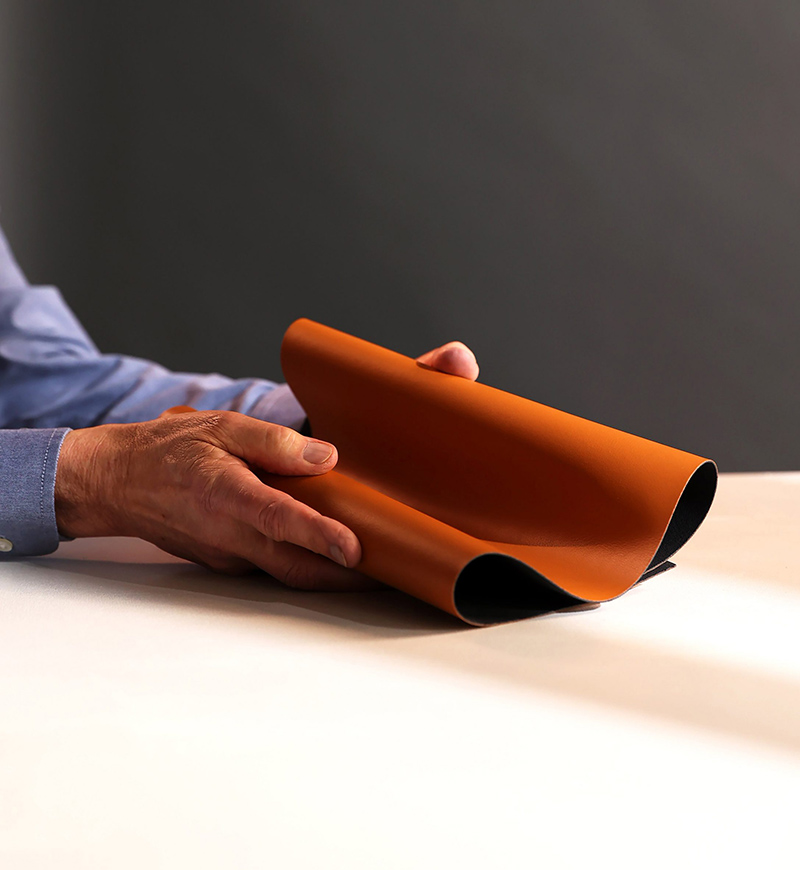What Is Apple Leather?
Apple Leather is produced by extracting fibers from residues taken from the industrial processing of apples. The wastes from the apple juice industry are recycled and these wastes are transformed into new raw materials.
Apple leather is a vegan leather-like material that is completely free from animals, making it the perfect material for anyone who particularly loves cute, fluffy cows. The material was developed by Frumat and is made by Mabel, an Italian manufacturer. Relatively new, the material, which is officially named Apple Skin, was first made into bags in 2019.

How To Make Apple Leather?
The process starts by taking the waste product which consists of the skin, stem, and fiber of the apples, and drying them. The Dried product will be mixed with polyurethane and laminated on recycled cotton and polyester fabric According to the end product the density and thickness will be chosen.
Apple leather is a bio-based material, meaning that it is partly biological: natural, organic. In the Tyrol region of northern Italy, an enormous amount of apples are grown. These apples are pulverised into delicious juice, and made into jams. When making juice or jam, the seeds, stalks and skins of apples can’t be used. Before apple leather came to be, these ‘left-overs’ were simply discarded, unuseable by the industry.
Today, Frumat collects these otherwise wasted fruit scraps and turns them into a fashionable material. The left-overs, like the apples turned to juice, are crushed, and then naturally dried into a fine powder. This powder is blended with a kind of resin that is, essentially, dried and laid flat into a final material -- apple leather.
Up to 50% of the final material is apples, and the remaining material is the resin, which basically coats and holds together the powder. This resin is what makes up conventional synthetic leather, and it’s called polyurethane.

Is Apple Leather Sustainable?
Apple leather is half synthetic, half bio-based, so is it sustainable? When we consider this, it’s important to understand the environmental impact of other comparable materials. According to data from the Sustainable Apparel Coalition (SAC), the most common leather, cow skin leather, is the third most negatively impactful material to produce. This is the case according to SAC’s index, which considers climate, water scarcity, fossil fuel use, eutrophication, and chemistry. It might be surprising, but even polyurethane synthetic leather has less than half that impact.

